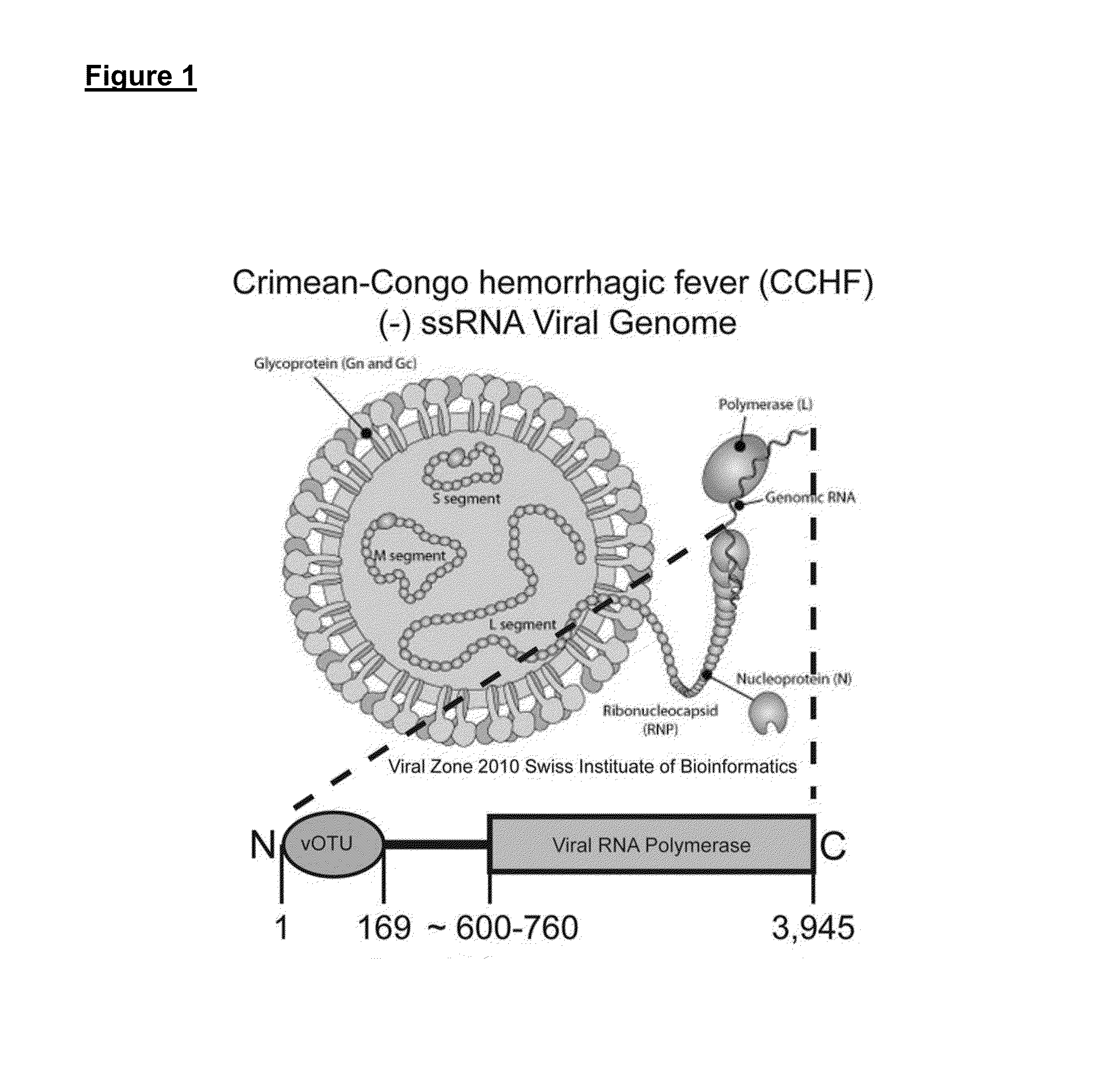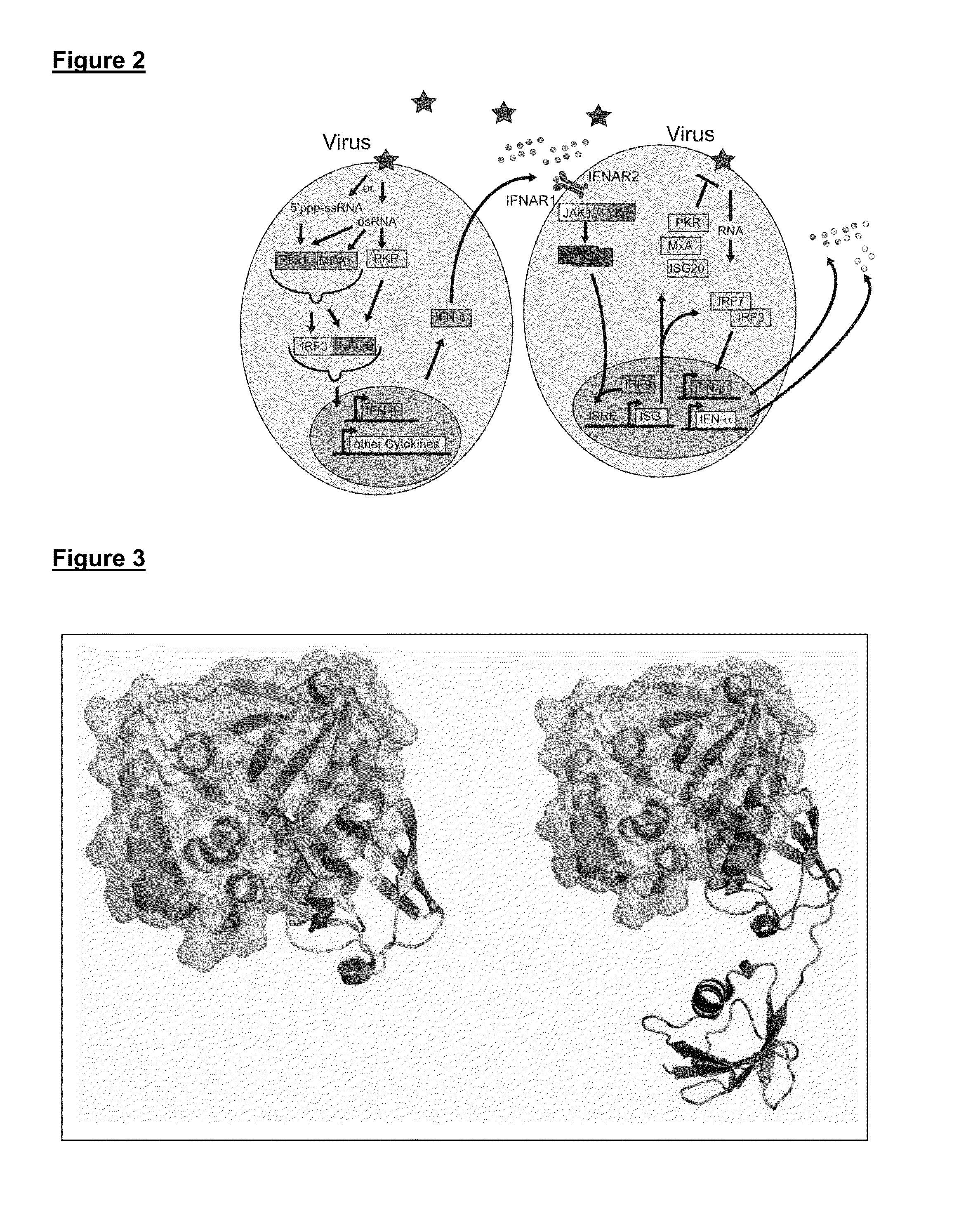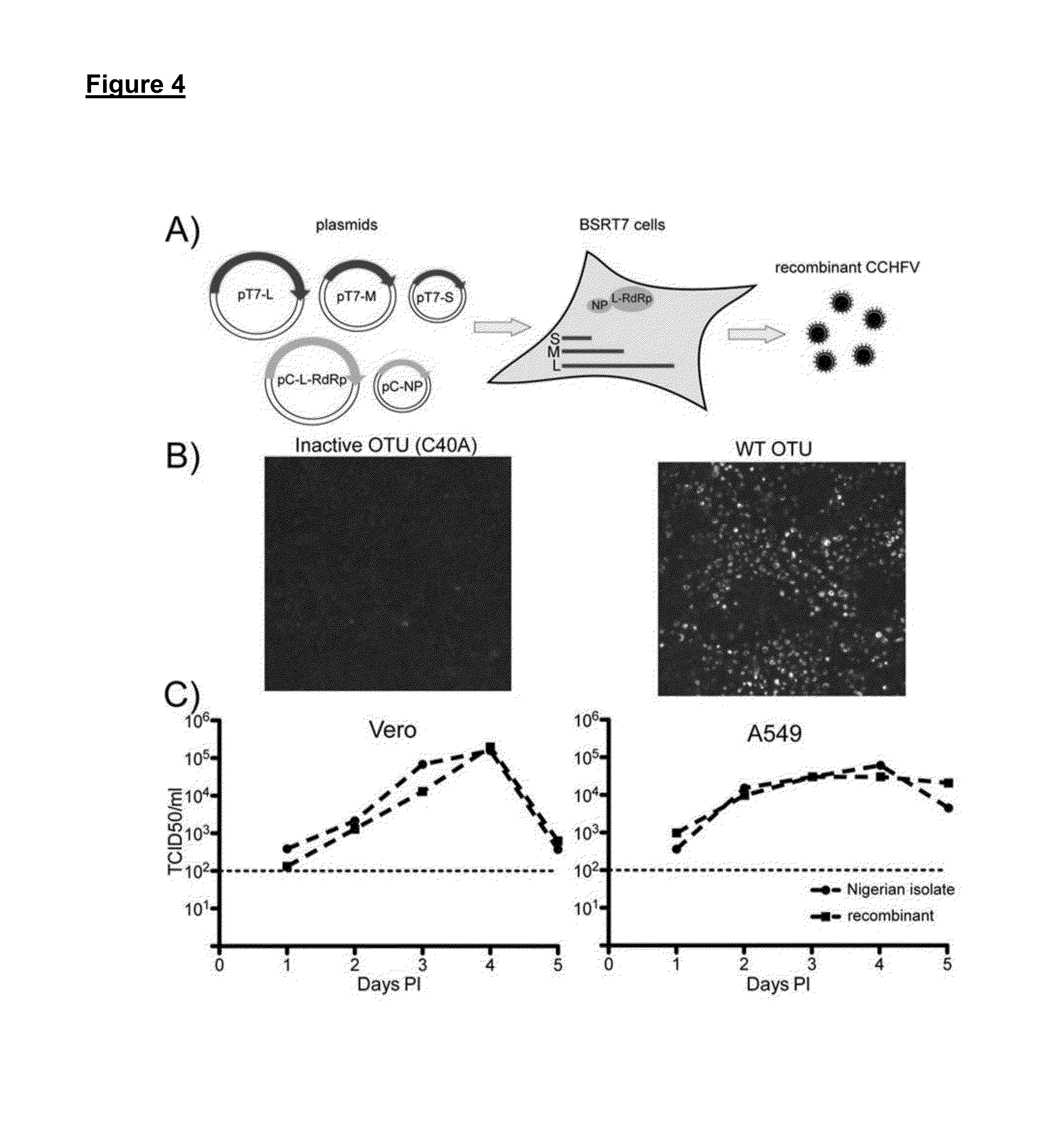Crimean-Congo Hemorrhagic Fever Virus Vaccine
a technology of hemorrhagic fever and vaccine, which is applied in the field of viral disease, prophylaxis and vaccination, can solve the problems of unproven unprotected contact with healthcare workers in endemic areas, and the risk of cchf in livestock herders, and no study exists to suggest any efficacy of this approach. , to achieve the effect of reducing the ability to remove ubiquitin, reducing the activity of d
- Summary
- Abstract
- Description
- Claims
- Application Information
AI Technical Summary
Benefits of technology
Problems solved by technology
Method used
Image
Examples
Embodiment Construction
Context
[0033]The Crimean-Congo hemorrhagic fever (CCHF) virus is a member of the genus Nairovirus, family Bunyaviridae. The negative sense RNA genome is composed of three segments—Small (S), Middle (M) and Large (L). The L segment is 11-14.4 kilobases in length while the M and S segments are 4.4-6.3 and 1.7-2.1 kilobases long respectively. The L segment encodes the RNA polymerase; the M segment encodes the envelope proteins (Gc and Gn); and the S segment encodes the nucleocapsid protein. The envelope protein is initially translated as a glycoprotein precursor which is then cleaved into the mature structural glycoprotein products (Gn and Gc) and non-structural glycoproteins.
[0034]CCHFV is not the only nairovirus that causes human disease. Dugbe virus (DUGV), Hazara (HAZV), Nairobi sheep disease virus (NSDV), and Ganjam virus (GANV) all result in varying severity of febrile illness and are located in a subset of countries within the CCHFV endemic region. Additionally, infection with N...
PUM
| Property | Measurement | Unit |
|---|---|---|
| Composition | aaaaa | aaaaa |
| Acidity | aaaaa | aaaaa |
| Immunogenicity | aaaaa | aaaaa |
Abstract
Description
Claims
Application Information
 Login to View More
Login to View More - R&D
- Intellectual Property
- Life Sciences
- Materials
- Tech Scout
- Unparalleled Data Quality
- Higher Quality Content
- 60% Fewer Hallucinations
Browse by: Latest US Patents, China's latest patents, Technical Efficacy Thesaurus, Application Domain, Technology Topic, Popular Technical Reports.
© 2025 PatSnap. All rights reserved.Legal|Privacy policy|Modern Slavery Act Transparency Statement|Sitemap|About US| Contact US: help@patsnap.com



